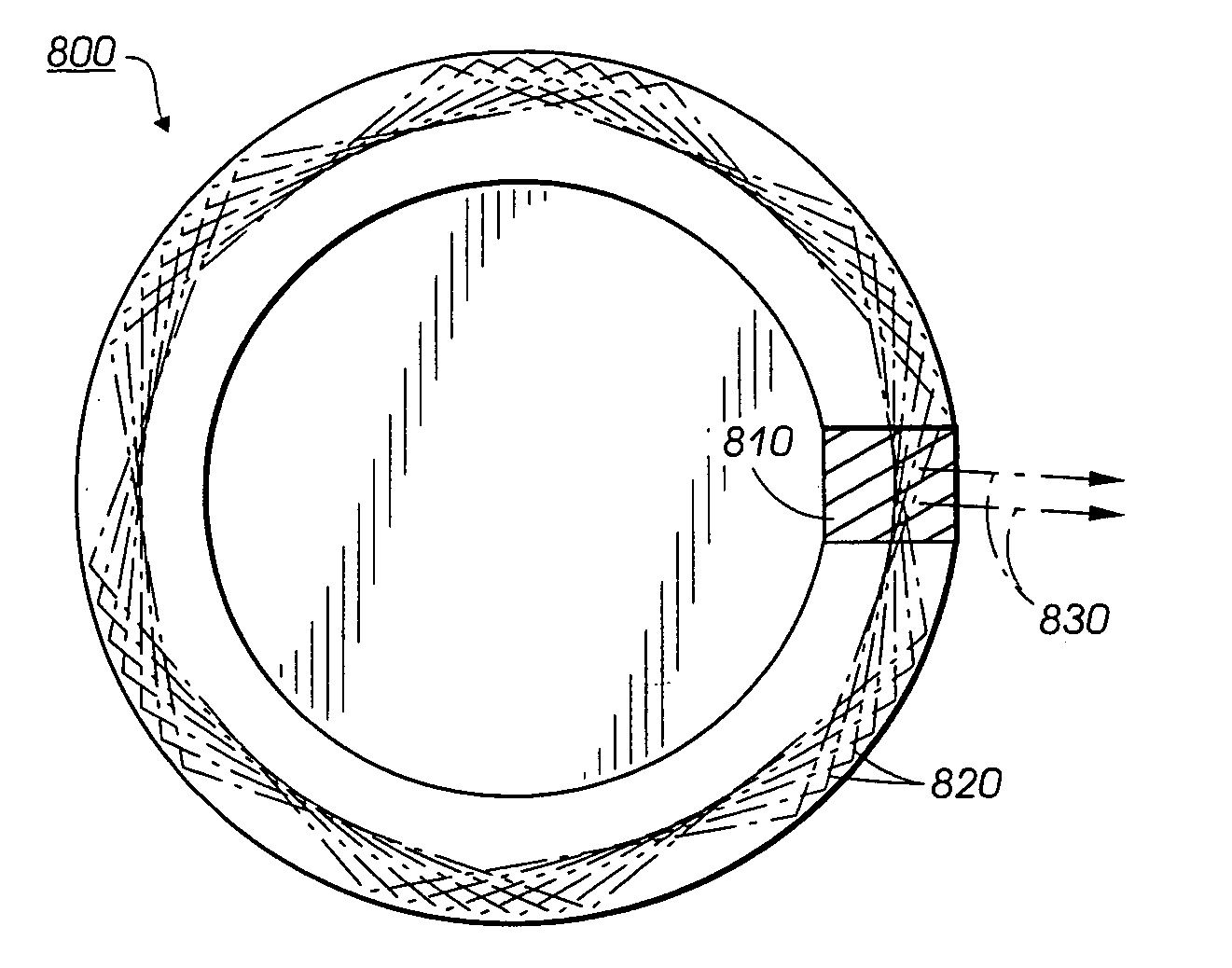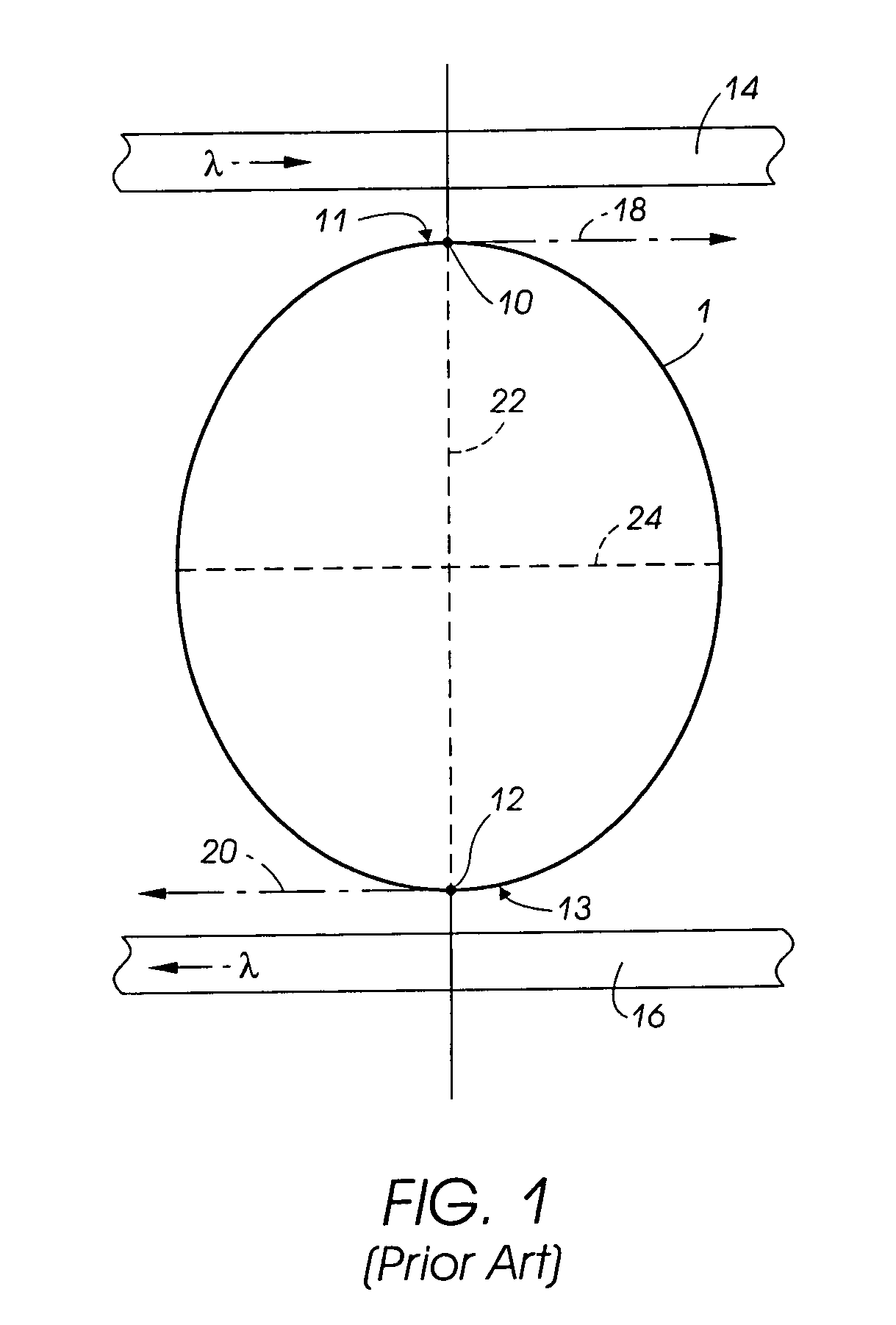Grating-outcoupled cavity resonator having uni-directional emission
a cavity resonator and grating technology, applied in the direction of optical resonator shape and construction, semiconductor laser structure details, semiconductor lasers, etc., can solve the problems of undesirable multi-directional emission, inappropriate multi-directional emission, etc., to achieve high output levels, large gain-length products, and the effect of tuning the efficiency of outcoupling over a wide rang
- Summary
- Abstract
- Description
- Claims
- Application Information
AI Technical Summary
Benefits of technology
Problems solved by technology
Method used
Image
Examples
Embodiment Construction
[0056]FIG. 1 shows a known embodiment of an asymmetric resonant cavity 1, wherein two axes of discrete symmetry 22 and 24 remain in the shape of the non-circular resonator 1. Because of the quadrupolar shape of the asymmetric resonant cavity 1, there is a point of maximum curvature 11 and 13 at each pole 10 and 12, respectively. Modes circulating in both the counterclockwise and clockwise directions in the asymmetric resonant cavity 1 are low loss, and therefore high gain. Because of the discrete symmetry of the asymmetric resonant cavity 1, the clockwise and counterclockwise modes are degenerate, and each mode will output one beam at each point of maximum curvature 11 and 13. Therefore, if this asymmetric resonant cavity 1 were to be electrically pumped, four output beams would be produced, one for each circulating mode, for each point of maximum curvature 11 and 13. Therefore, this non-circular resonator 1 is not uni-directional, in that at least four output beams are produced whe...
PUM
 Login to View More
Login to View More Abstract
Description
Claims
Application Information
 Login to View More
Login to View More - R&D
- Intellectual Property
- Life Sciences
- Materials
- Tech Scout
- Unparalleled Data Quality
- Higher Quality Content
- 60% Fewer Hallucinations
Browse by: Latest US Patents, China's latest patents, Technical Efficacy Thesaurus, Application Domain, Technology Topic, Popular Technical Reports.
© 2025 PatSnap. All rights reserved.Legal|Privacy policy|Modern Slavery Act Transparency Statement|Sitemap|About US| Contact US: help@patsnap.com



